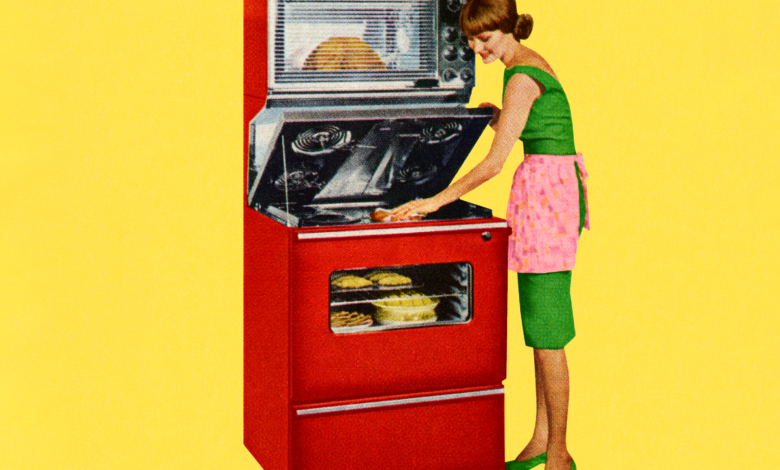9 ‘Healthy’ Cooking Myths It’s Time to Let Go Of

Plus there’s just no comparison between the two when it comes to affordability and accessibility, Harbstreet says. Low-cost frozen and canned vegetables make it easier to hit daily recommended produce intakes without having to overspend on time or money. Think of that pasta dish you’re making: You know including some zucchini, mushrooms, or peppers could add nutrients, fiber, and flavor to your meal, but you just can’t muster up the energy to get slicing. If you’ve already got a frozen bag of the precut stuff? Sprinkling that into your skillet is a whole lot more doable after a long day at work. What’s more, Harbstreet says, because some canned or frozen veggies are already precooked to some degree, they shorten your prep time too.
6. Brown rice is the way to go.
Swapping brown rice for white rice is often touted as a great way to eat more fiber, but that sub doesn’t quite deliver the nutritional punch that’s promised, Harbstreet says. “The net difference per serving is only about 1 to 1.5 grams [more].”
If you really don’t care for the taste or texture of the whole grain version, don’t force it on your plate simply as a way to boost your fiber intake, she says. Instead, she recommends thinking of rice as a vehicle for fiber-rich stuff you do enjoy, like veggies, nuts, seeds, and legumes. You could add a fourth of a cup of lentils to your next batch of white rice and get a bigger fiber boost than you would from eating brown rice alone, or you can stud your bowl with roasted diced veggies like cauliflower or brussels sprouts.
7. If you’re cooking, it better be Mediterranean.
Flip open any health magazine and you’re sure to find an aesthetically pleasing photo of greens, lean meats, olive oil, and herbs—the epitome of the Mediterranean diet, which has become the poster child for healthy eating over the last couple decades. But there’s no one right way to eat healthy, Harbstreet says.
“This belief that a Eurocentric eating pattern is the pinnacle of healthy eating leads to the assumption that anything that differs from that is deviant and disease-promoting,” Harbstreet explains. As a result, we tend to discount other cuisines from around the world in favor of what we’re used to and end up losing access to a lot of great nutrition sources in the process—from gut-healthy fermented foods like kimchi and sauerkraut to anti-inflammatory spices like turmeric. “It’s long past time to include these options when talking about healthy ways of cooking and eating,” she says.
8. Microwaving zaps all the nutrients.
Microwave ovens are often blamed for destroying the nutrients in food or, even worse, blasting what we eat with radiation. While it’s true that microwaving can change the nutritional composition of food, it doesn’t do it any more than other cooking methods like sautéing, roasting, or pressure cooking. According to Geiger, how much depends on exactly what food and what nutrients you’re looking at. For instance, thanks to its relatively quick cooking time and lack of water, microwaving leads to less loss of vitamins A and C and less degradation of B1 and B6, a study in Frontiers in Nutrition found. And in case you were worried that the radiation from the microwave could pose a health risk, you can rest easy: There’s just no reliable link there. So if microwaving is a convenient way to get yourself to eat more nutrient-dense food on a consistent basis, then go ahead and nuke it up, Geiger says.
9. Healthy cooking is time-consuming and expensive.
When asked which healthy cooking myth is the most prevalent and detrimental, almost all of our experts agreed that it’s the belief that you need a lot of money and free time to cook nutritious meals. When social media is filled with influencers hawking beautifully crafted, 100% fresh food, it’s hard to not feel like you have to do the same in order to have a well-rounded diet. But it doesn’t need to be that deep: You can get a nutritious meal on your table that’s quick, convenient, and budget-friendly with the right resources and knowledge, Lopez says.
Meal prep can be your friend here, she explains. Who says that you have to cook a different nutritious meal every day? Combine that with time-saving tips like incorporating nutrient-rich processed foods and canned or frozen fruits and veggies, as well as flavor boosters like tasty fat sources and the ingredients you actually like, and making your own “healthy” meals can be a lot more convenient and accessible—which just might get you more excited about the possibility of cooking in the first place.
Related:



